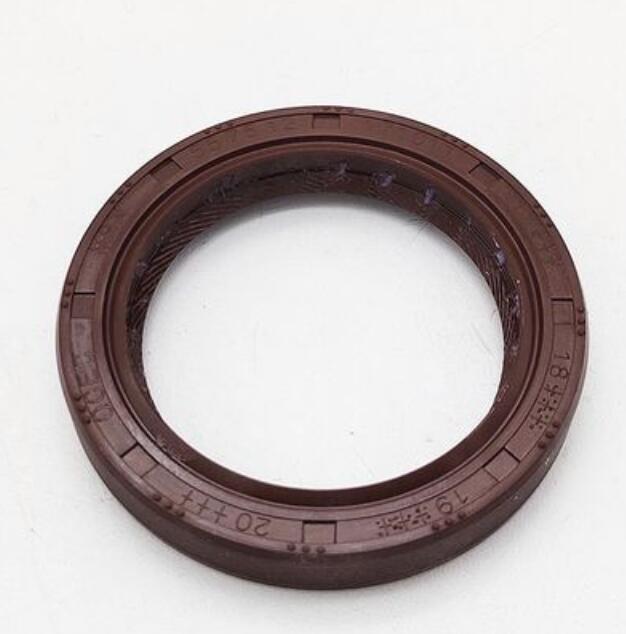What is the best oil seal material?

Common materials for oil seals include: nitrile rubber, fluororubber, silicone rubber, acrylate rubber, polyurethane, polytetrafluoroethylene, etc.
Nitrile rubber (NBR)
It has good heat resistance, wear resistance, resistance to various lubricating oils, greases, oil gas mixtures, etc., and is suitable for temperatures ranging from - 30 to 120 degrees Celsius. However, it cannot be used in phosphate ester based hydraulic oils and gear oils containing extreme pressure additives, and has stable performance in gasoline and low aniline point mineral oils.
Polyacrylate rubber (ACM)
Excellent oil and heat resistance, wear resistance, ozone resistance, UV radiation resistance, especially for lubricating oils, gear oils, engine oils, and petroleum hydraulic oils containing extreme pressure fluids, suitable for temperatures ranging from - 30 to 150 degrees Celsius.
Fluoroelastomer (FPM)
It is resistant to aging, heat, and oil, and is suitable for almost all lubricating oils, fuel oils, and gasoline. It is not easy to harden in oils containing extreme pressure additives, but has poor cold resistance, high temperature wear resistance, and large permanent compression deformation. It is suitable for temperatures ranging from - 20 to 250 degrees Celsius.
Silicon rubber
With excellent high and low temperature resistance, it can be used for a long time at 150 degrees Celsius without any change in performance; It can be used continuously for 10000 hours under 200, and maintain its unique advantages of flexibility, ozone resistance, weather resistance, and other advantages within the operating temperature range of - 70 to 260.
Teflon
It has excellent chemical stability, thermal stability, antifriction, and self-lubrication, and its cracking temperature is above 400. Therefore, it can operate normally in the temperature range of - 200 to 300 degrees Celsius. In addition to free fluorine and alkali metals, it has excellent corrosion resistance to chemicals, solvents, oxyhydrogen compounds, and acids.
Nitrile rubber and fluororubber materials are widely used as oil seals. The former has a lower cost, but significantly improves temperature resistance and sealing performance, but has a higher cost. They still have some undesirable common characteristics of ordinary rubber materials, such as poor wear resistance, short service life, and particular sensitivity to eccentric shaft reactions. Leaks are still relatively common. Polytetrafluoroethylene oil seal is a product with high technical content and is the development direction of future oil seals.
When selecting oil seal materials, it is necessary to consider the compatibility of the material with the working medium, adaptability to the working temperature range, and the ability of the lip to follow the rotating shaft during high-speed rotation. Generally, the temperature of the oil seal lip during operation is 20 to 50 ℃ higher than the temperature of the working medium. Pay attention when selecting oil seal materials. The working range of the oil seal is related to the material used: nitrile rubber (NBR) at - 40 to 120 ℃, acrylic rubber (ACM) at - 30 to 180 ℃, and fluororubber (FPM) at - 25 to 300 ℃.





















